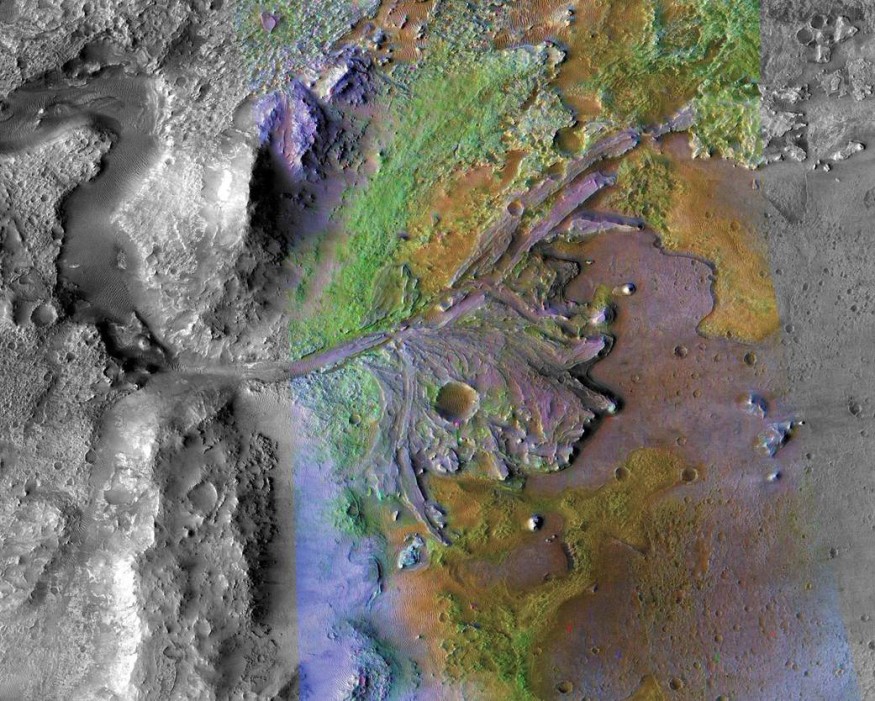
As NASA green lights aim to find life on Mars via the Mars 2020 rover, a new study shows there are deposits of hydrated silica found at the Jezero crater where the rover is scheduled to land.
LIFE ON MARS?
Researchers from Brown University developed a technique that will help scientists find rare and hard-to-detect mineral data taken from the orbiting spacecraft. In the study, Jesse Tarnas, a Ph.D. student at Brown University and the lead of the author, explains, "We found two outcrops of hydrated silica within Jezero crater. We know from Earth that this mineral phase is exceptional at preserving microfossils and other biosignatures, so that makes these exciting outcrops targets for the rover to explore." The findings in this study are published in Geophysical Research Letters.
NASA chose the Jezero crater to be the landing site because it appears to have an ancient lake in its vicinity and the delta would have been able to concentrate a wealth of material from vast watershed—much like the deltas on Earth which are known to be good at preserving fossils and other signs of life.
The presence of hydrated silica at the Jezero crater increases the potential of biosignature preservation, according to the researchers behind the study. The scientists explained that one of the silica deposits was found on the edge of the delta at low elevation. It can be possible that these minerals were formed in place. According to Jack Mustard, professor and co-author of the study, the material that forms the bottom layer of a delta can be the most productive in preservation. He says, "so if you can find that bottom set layer, and that layer has a lot of silica in it, that's a double bonus."
In order to complete the study, the researchers compiled data gathered by CRISM or the Compact Reconnaissance Imaging Spectrometer for Mars, an instrument that flies aboard the Mars Reconnaissance Orbiter. The technique applied to the data used large data analysis methods to find the weak spectral signature of the silica deposits. However, the formation of the mineral deposits is not limited to the base of the delta. It could have been formed upstream in the watershed that leads to the Jezero crater lake that has been washed subsequently into the crater by volcanic activity or, if possible, water saturation. According to Tarnas, given the instruments on the rover, the team will be able to constrain the origin of these deposits. "We can get amazing high-resolution images compositional data from orbit, but there's a limit on what we can discern in terms of how these minerals formed," he says.
The scientists expect the Mars 2020 rover to be able to perform fine-scale chemical analysis of the deposits and send back a close-up of how the deposits are situated in relation to the surrounding rock units. A sensor similar to that of CRISM will be present in the rover to connect orbital and lander data.
© 2025 ScienceTimes.com All rights reserved. Do not reproduce without permission. The window to the world of Science Times.











